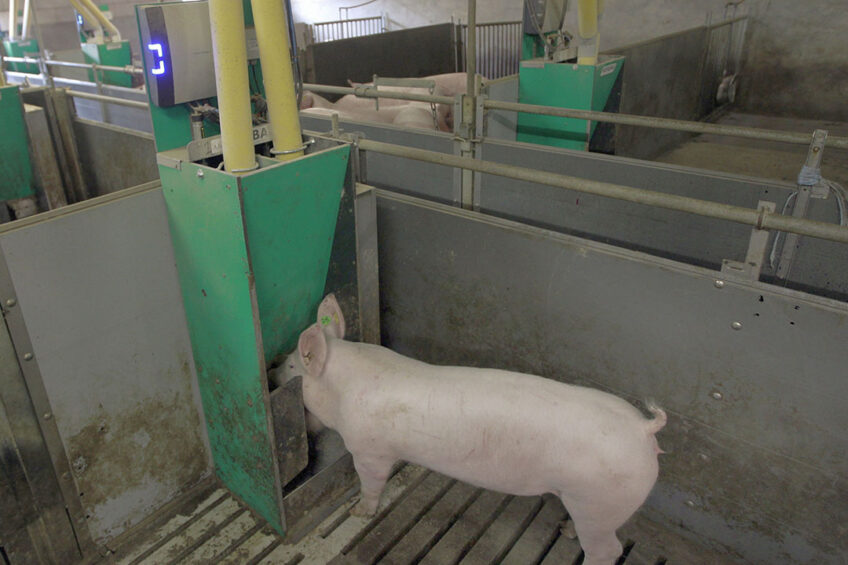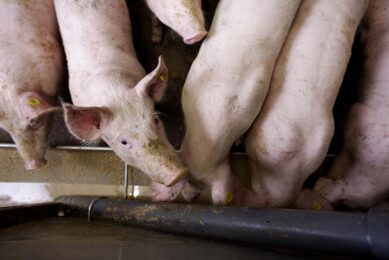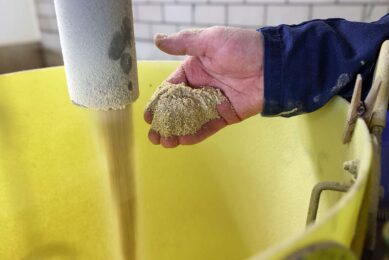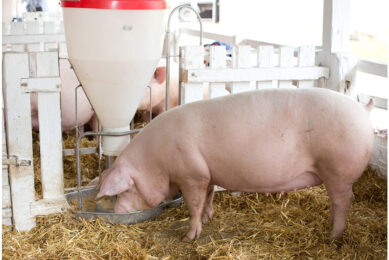Focus on energy and fibre at farewell of Prof Patience

The 2021 International Conference on Swine Nutrition was held in honour of Prof John Patience, who recently retired from Iowa State University. In his farewell presentation, he zoomed in on fibre and energy in swine diets.
The International Conference on Swine Nutrition, held 11-12 August in Ames, IA in the US, marked the retirement of Prof John Patience (pictured) as professor of applied swine nutrition at Iowa State University. In his farewell presentation, Prof Patience zoomed in on ‘Nutritive and non-nutritive roles of fibre in the diet. Is there any good news?’
Prof Patience explained that, when he came to Iowa State University, he wanted to change his focus and create a niche that no one else was focusing heavily on at the time. Thus, he chose energy and fibre for his laboratory’s focus.
Work around fibre from corn and by-products
 |
Prof John Patience |
During his discussion he focused on their work around fibre from corn and their by-products and determining how to optimally evaluate fibre in feedstuffs. Prof Patience’s choice of assay would be non-starch polysaccharide (NSP) plus lignin. However, currently there is little supporting information in the databases to adequately formulate on these today.
Another interesting point of discussion was why average daily feed intake (ADFI) seems to plateau in finishing pigs as fibre increases. He suggested that nobody has ever considered the time of consuming the bulky feed and suggesting feeder space needs to be considered to overcome this challenge in not only feed intake but growth as well.
He referred to research conducted by him and Nichole F. Huntley in 2018: “Pigs can metabolise xylose, but with considerably lower efficiency than glucose, and may be able to adapt with time to utilise xylose more efficiently.”
Mode of action of xylanase and added fat
To follow Dr Patience, both Dr Amy Petry and Dr Trey Kellner presented follow-up presentations to their doctoral research focusing on xylanase’s mode of action (Petry) and added fat (Kellner) in finishing pigs.
Dr Kellner presented information around the differences in net energy (NE) calculations and its results on performance and economics when considering different fat sources. Based on early work from 1989, there was a 200% difference in NE value for fat sources and the NE values given by the National Research Council (NRC) in 2012. This was only ever based on 5 pigs at an average weight of about 60 kg. Thus, his work evaluated different fat sources. One of the key points he made from his original research was the fact that endogenous losses of energy were not considered, which would cause some inaccuracies.
When running formulation examples, these differences in equations or inaccuracies could cost up to US$ 2/pig. However, if there was truly an 814 kcal/kg difference, this would result in a 2.51 vs. 2.49 FCR or approximately US$ 0.60/pig. He reminded that he was doubtful you could pick this up in a finisher closeout.
 Read also: 7 Strategies to reduce feed costs
Read also: 7 Strategies to reduce feed costs
Swine nutrition expert Dr Francesc Molist looks at how swine producers are dealing with the challenge of increasing feed costs. Find out more…
Net energy content of fat sources
Some last points of discussion were beyond understanding net energy content of fat sources, but fatty acid profiles of sources. This is lacking in today’s databases as well, and Dr Kellner mentioned work by Dr David Rosero and the need to better understand linoleic levels, especially for sows.
Swine nutrition professionals from all over the world
At the conference, presentations were given by different professionals around the world focusing on the advancements of swine research throughout the world, while also highlighting Dr Patience’s career at Iowa State University. Additionally, to create more of an interactive experience, there were several panel question and answer sessions as well that sparked thought-provoking discussions even outside of the meeting.
Other speakers included Dr Defa Li of China Agricultural University, who gave a great overview of swine nutrition and production for the past, present and future. There are all indications that China will become the next powerhouse in swine research, he said, as their government and private industries invest heavily sustainable food supply.
In addition, Dr Peter Kappel Theil of Aarhus University in Denmark highlighted his research in sow farrowing duration and lactation performance, while setting the stage of the role of fibre from a European perspective. There are differences in optimising farrowing duration and reducing the number of stillborns when compared to litter efficiency.
 Read more about research by Prof John Patience, for instance on feed efficient pigs and stress: In 2016 ongoing research at Iowa State University has focused on selective breeding pigs with low residual feed intake. After 10 generations, it has become clear that the benefits extend those of feed efficiency – these pigs also deal better with stress. Find out more…
Read more about research by Prof John Patience, for instance on feed efficient pigs and stress: In 2016 ongoing research at Iowa State University has focused on selective breeding pigs with low residual feed intake. After 10 generations, it has become clear that the benefits extend those of feed efficiency – these pigs also deal better with stress. Find out more…
Evaluating benefits of soybean meal
To follow suit to the concept of energy and formulation or production costs, some presentations evaluated the benefits of soybean meal, creating formulation models beyond nutrient requirements, creating designer microbiota via probiotics, and insights into evaluating NE in group-fed animals, and an update on branched-chain amino acid (BCAA) nutrition in swine.
Dr Patience’s legacy will continue as it was announced that the ‘Dr John Patience Chair in Swine Nutrition’ has been funded and is seeking applicants to continue the work in swine nutrition for the future.











